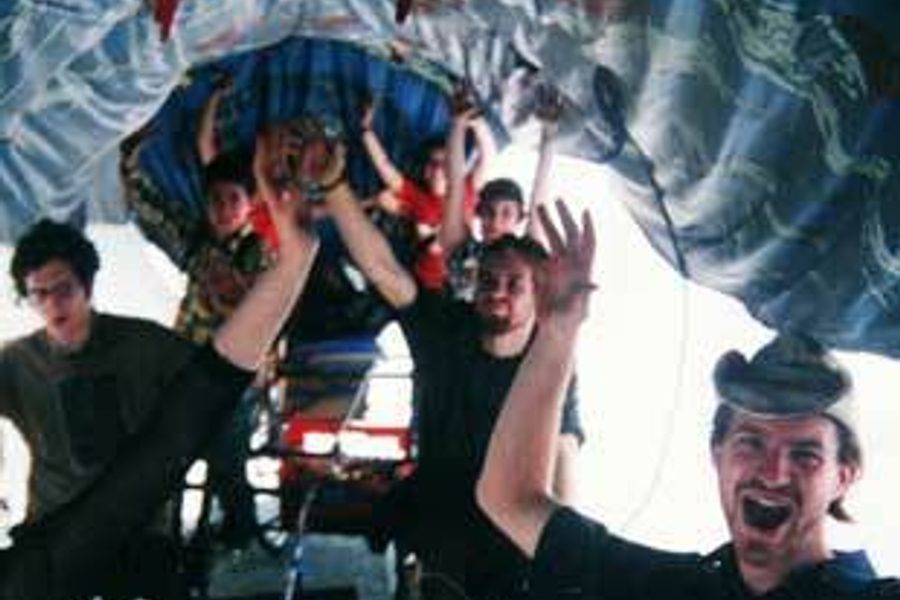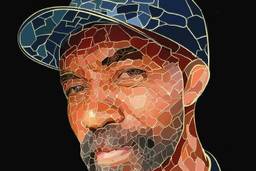
This past January I spent a week in a chilly warehouse in Tacoma, Wash., making puppets with 20 other activists to support Army First Lt. Ehren Watada, the first commissioned officer to publicly refuse deployment to Iraq. We were creating a play to perform on Feb. 5 at the vigil outside the gates of Fort Lewis, Wash., where his court-martial – which would end in a mistrial – was being held.
We spent hours painting, taping, cutting, gluing, eating and talking. For the characters in our play, we created a 15-foot-tall judge with a sculpted cardboard head and paper mâché hands, jurors and witnesses, and, for our finale, doves and suns to end with a vision of a beautiful future.
But art and activism aren’t just about pageantry. Skilled activists use culture as an entry point into larger discussions of politics and theory, and use art and culture to celebrate victories and mourn losses. Art becomes a way to engage the public, reinspire activists who are tired of the same old marches and chants, and at its best, model a future world where our lives are both productive and enjoyable.
But connections between art and activism are often tenuous. Individuals who straddle the two communities face artists who don’t care about politics and activists who don’t take art seriously. Realizing the Impossible: Art Against Authority, a new and beautifully illustrated anthology edited by Josh MacPhee and Erik Reuland, explores these intersections and contradictions while linking art, culture and anarchist politics.
As most anthologies do, Realizing the Impossible covers a wide territory. Interviews with pioneers in arts and organizing like the group Black Mask, which created provocative street theater in the ’60s, Clifford Harper – well known for his late-80s Anarchy: A Graphic Guide–and Crass artist Gee Vaucher sit alongside essays on how social movements like the Zapatistas use video technology to strengthen their community. There are historical pieces, like Dara Greenwald’s look at video collectives of the ’70s, and theoretical discussions, like David Graeber’s “The Twilight of Vanguardism,” covering art for art’s sake, the relationship between alienation and oppression and, of course, vanguardism. Each of these contributions provides snapshots of a vast political-cultural movement.
The strength of this anthology is its accessibility, with none of the authors assuming a deep familiarity with anarchism or art history. Christine Flores-Cozza interviewed the late Carlos Cortez, an artist, poet and lifelong activist known for his prints and woodcuts. Cortez, who went to jail for refusing the draft in World War II, tells Flores-Cozza, “The artists who are strong enough and courageous enough can fight, can use their art to fight tyranny, repression, and that.” Asked how someone would study under him, Cortez responds: “You don’t teach art. You open doors. It’s one thing to show you how to push an engraving tool, handle a brush, blend colors, and that. But that only liberates what is inside of you.”
The best piece in the anthology is Morgan Andrews’ detailed history of radical puppetry. The puppet-making in Tacoma, Andrews shows, was just one more act in a long legacy of social justice puppeting. “Protest puppetry is any kind of puppet theater that draws attention to the ironies and flaws in the way things are,” Andrews writes, “and hopefully illustrates a way that things could be instead.”
He covers the use of puppets in 18th and 19th century Europe, like Punch and Judy in England, to criticize the government or satirize local leaders, and moves on to an in-depth look at modern-day pioneers like the Bread and Puppet Theater in Vermont which, as Andrews says, is “the chief progenitor of modern protest puppetry in the United States,” and Heart of the Beast, based in Minneapolis. Andrews skillfully brings out criticisms of these groups without diminishing the groups’ impact or significance. The article continues with contemporary groups like Art and Revolution, which played an integral part in creating the look and feel of the 1999 WTO protests in Seattle.
Another great selection is Nicolas Lampert’s essay on memorializing the Haymarket massacre, “Struggles at Haymarket: An Embattled History of Static Monuments and Public Interventions.” In 1886, demonstrations for an eight-hour workday in Chicago’s Haymarket Square turned violent when an unknown person threw a bomb into the police line, and the police responded by firing into the crowd. When it was over, the bomb and the shooting had killed eight policemen and 200 civilians were injured (the civilian deaths are uncounted). Eight anarchists were tried and convicted of murder, even though some of them were not even in the square at the time of the bombing. Four of them were executed, one committed suicide, and three were later pardoned.
Lampert’s essay recounts the long history of the attempts to memorialize this horrific event with different statues, including the monument to the policemen that was run over by a streetcar and later bombed by the Weathermen, and which is now housed at the police academy instead of a public place. A separate monument remembering the executed anarchists stands in Waldheim Cemetery in Chicago. Lampert considers the controversies that can result when groups with competing perspectives want input on the placement, imagery and message of a permanent monument.
Realizing the Impossible is crowded with photos and illustrations, dark lines and sometimes-intrusive footnotes. It provides a window into a hidden history of the world (and it truly is the world, as the book documents artists and movements in the U.S., Indonesia, Argentina and Mexico). What you will not find in this book, though, is a cohesive analysis of how different art and activism movements developed in an interconnected way over time. A careful and interested reader, however, will be able to piece together much of this history.
In their introduction, MacPhee and Reuland summarize the purpose of Realizing the Impossible: “This book is the beginning of an anarchist art theory … as political artists, we believe it is critical that we understand the history of what we are doing and think of ways we can use art for our collective liberation. It is no longer enough today to lock ourselves in our studios and produce culture. We must engage in our world in as many ways as possible.”






